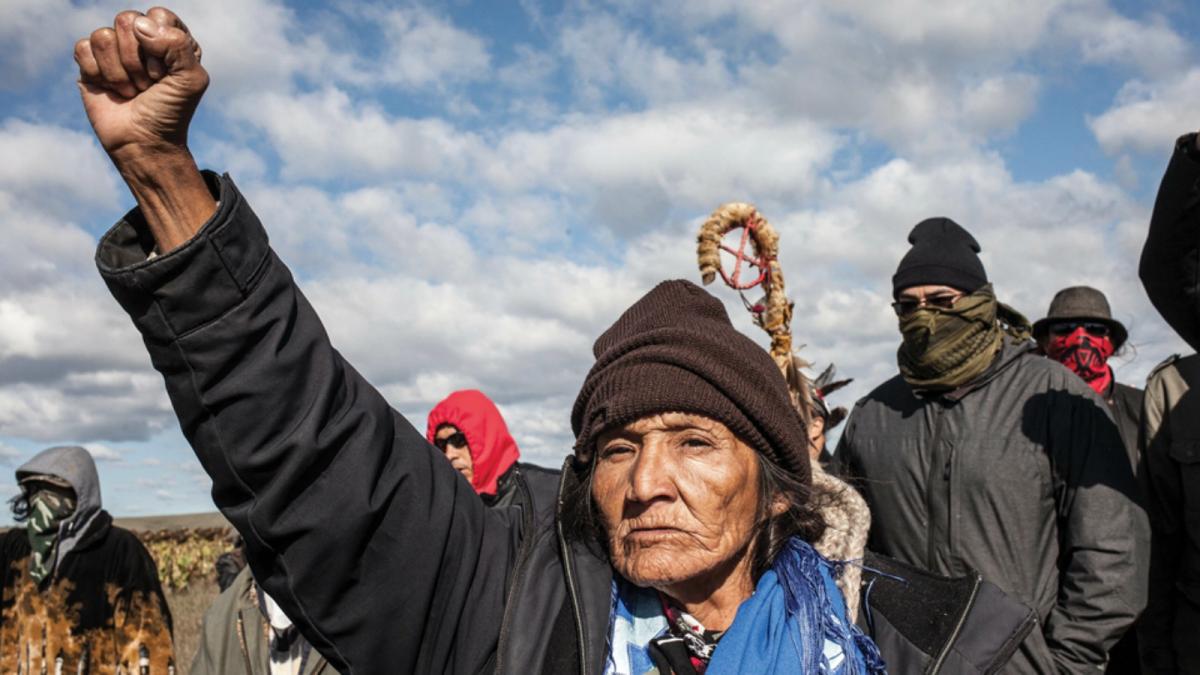This story was originally published by Mother Jones and is reproduced here as part of the Climate Desk collaboration.
Ome Tlaloc walked through the North Dakota hills with a flashlight and a walkie-talkie, scouting for police in the prairie dark. Earlier that evening, I’d met the 30-year-old on Highway 1806, where he’d been sitting behind a makeshift barricade. Now he was doing reconnaissance. The Morton County Sheriff’s Department and the National Guard, stationed ahead of us on the road, were planning to raid the camp where Tlaloc and hundreds of other protesters had been living for the past week. The barricade was meant to stop the cops, or at least to slow them down. As he walked, Tlaloc listened to his radio for the code words that would signal when he and his comrades were to spring into action: “Eagle’s Claw.”
The Standing Rock Sioux reservation sits in the Dakota Prairie Grasslands, an endless sweep of elephantine hills once home to millions of members of the Lakota Nation. Today, it’s inhabited by fewer than 9,000 of their surviving descendants, and one of the few places in America where buffalo roam wild. In late... Read more
